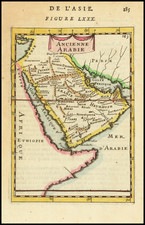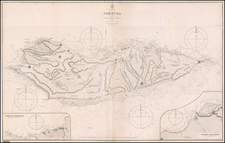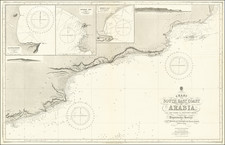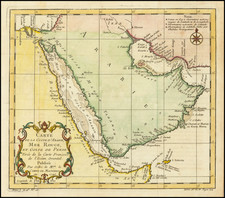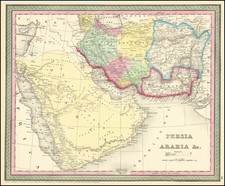The Geographic Map of the Western Arabian Gulf Quadrangle offers a comprehensive representation of the significant oil and gas fields in western Qatar, Bahrain, and the Khobar region of Saudi Arabia, as well as regions farther north. Authored by Max Steineke, T. F. Harriss, K. R. Parsons, and E. L. Berg, this map was originally published in 1958 by the U.S. Geological Survey as part of a cooperative mapping program sponsored by the Kingdom of Saudi Arabia. A revised edition, GM-208 B, was furnished with additional place names and details about roads, oil fields, and pipelines by the Arabian American Oil Company in 1975.
In the mid-20th century, the Arabian Gulf region emerged as a major player in global energy production, with Saudi Arabia at the forefront. This map presents a detailed study of the burgeoning oil and gas industries during that transformative period, providing insights into the extensive network of wells, pipelines, and other infrastructures that marked the region's landscape.
One striking feature of this map is its meticulous classification of the region's physical features, from populated places to transportation routes and hydrographic features. It details everything from major roads and railroads to camel trails, painting a comprehensive picture of a region in flux, with traditional ways of life coexisting with modern industry.
Another intriguing aspect is the in-depth representation of different types of sand terrains. From mobile sand cover consisting primarily of dunes and linear ridges to more stabilized sand cover, this comprehensive classification reflects the region's distinctive geological and topographical features. These details further underscore the map's utility in understanding the environmental and geological context of the region's oil and gas industries.
Lastly, the map’s intricate illustration of various oil-related infrastructures—wells, multi-well drilling platforms, gas wells, water injection wells, pipelines, pumping stations, and oil separation plants—represents the extensive development of Saudi Arabia's oil industry. By marking these features, the map serves as an invaluable resource for understanding the rapid industrialization that transformed the region during the mid-20th century.











